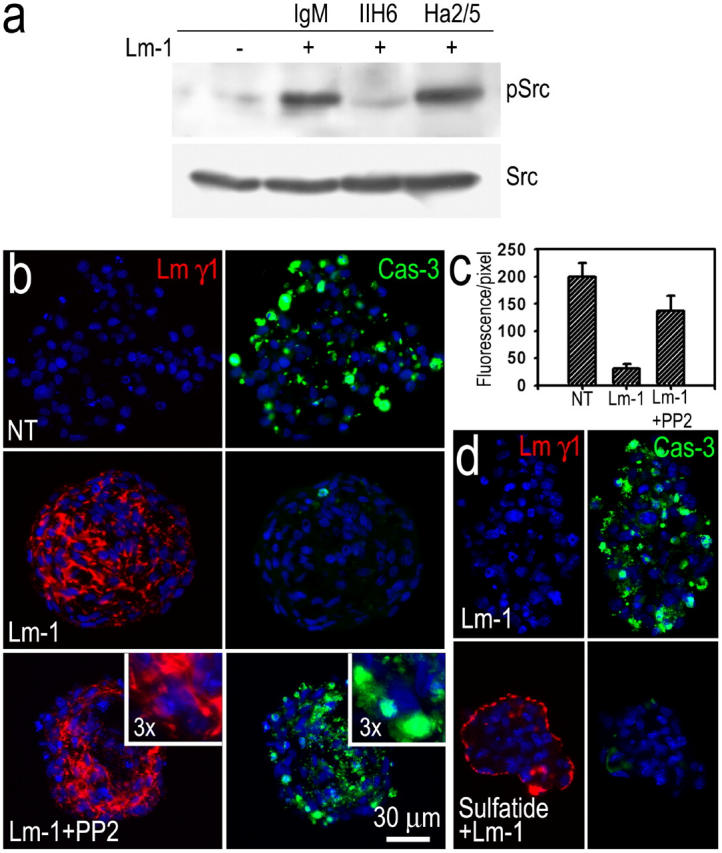Figure 8.

Inhibition of Src kinase reduces the Lm-dependent protection from apoptosis. SCs and MEFs grew as spherical clusters in suspension. (a) SCs were cultured in suspension in the absence (−) or presence (+) of Lm-1 (10 μg/ml) plus DG-blocking antibody IIH6 (10 μg/ml), β1-integrin–blocking antibody Ha2/5, or control IgM for 6 h. Cell lysates were subjected to immunoblot analysis for c-Src-Py416 (pSrc) and total c-Src (Src). (b) SCs were grown in suspension in the absence (NT), presence of Lm-1 (10 μg/ml), or Lm-1 + Src kinase inhibitor PP2 (2 μM) in serum-free medium for 24 h, cryosectioned, and stained for Lm-γ1, activated caspase-3, and DAPI (blue). The Lm-treated cell clusters developed linear, pericellular deposits of Lm. Caspase-3 fluorescence that was detected in untreated cells was almost completely absent in the Lm-treated cells. Src inhibition eliminated the Lm-dependent survival effect. (c) Relative quantitation of SC apoptosis. The ratio of cleaved caspase-3 immunostain summed intensities, divided by the DAPI-stained nuclear areas, was plotted (mean ± SEM; n = 10 fields). (d) Lm matrix assembly protects MEFs from apoptosis. Cells untreated or treated with gal-sulfatide were cultured in suspension and incubated for 24 h with 20 μg/ml Lm-1 in serum-free DME. Cell clusters were immunostained for Lm and cleaved caspase-3. Lm-1 accumulated in a linear pattern, mostly on the surface of sulfatide-loaded MEF clusters with the cells showing little apoptosis. In untreated MEFs, Lm-1 did not accumulate in the cell clusters with the cells undergoing substantial apoptosis.
